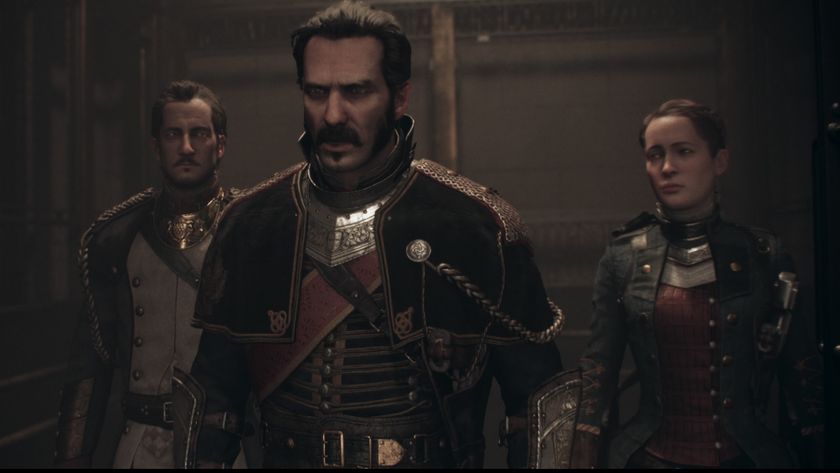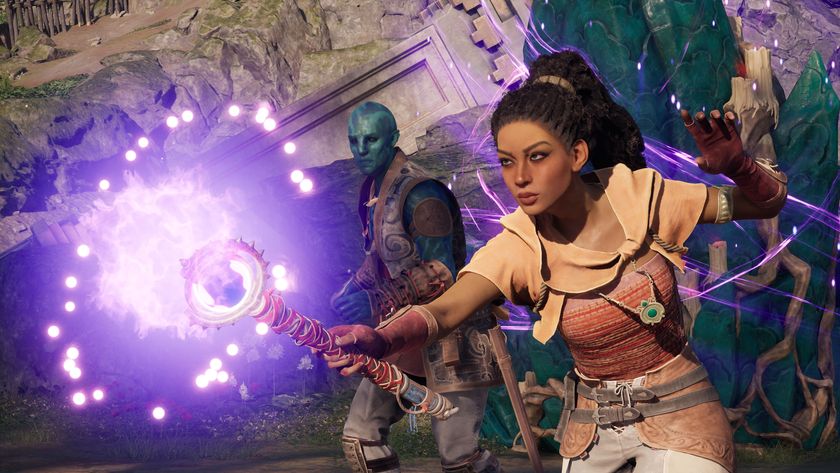Aliens: Colonial Marines campaign hands-on preview
A great Aliens experience, but is it a great game?
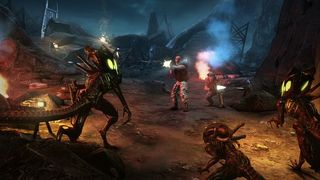
Know this: In the absolute worst case scenario, Aliens: Colonial Marines is shaping up to be the most authentic adaptation you could want. It’s not just about how the game looks, though its visuals convince at every turn. The bleak, charcoal-grey hell of LV-426’s surface is just as twisted and imposing as it should be, wailing wind and simmering lava evoking a harsh environment as dead as it is deadly. And the dank, dripping, ambiguous corners of the Hadley’s Hope complex are more than likely to make you jump at the sight of a curling, tail-like power cable dangling in the shadows.
More important (and impressive) though is the fact that everything feels right. There’s no sense of weak impersonation here. Nor is this a mechanical video game remake, going over the same old ground in hollow tribute. It’s a video game sequel, revisiting Aliens’ world but expanding upon it.
As such, the game takes a smart approach to fan-service. For instance the early stages of the level we played (number four to be precise) are set in and around the most frequented areas of the film, neatly justifying unspoken references without resorting to ruinous, clumsy shout-outs. The history of the setting is all around, but only if you know what you’re looking for.
The distant wreckage of the atmospheric processor looms on the horizon, but our attention is never drawn directly to it. If you look closely when entering that corridor upon arrival at Hadley’s Hope, you’ll spot the acid burn in the ceiling and in the floor. An overturned bed still lies in the corner of the medical bay. The connecting window is shot out, gaping with a jagged Marine-sized hole. Before you even fire a pulse rifle (which feels exactly as compact, meaty and manoeuvrable as it should) or Smart Gun (whose grainy camera-equipped visor evokes the video feed of a certain ill-fated rescue mission horribly well), the entire place drips with authentic Aliens lore.
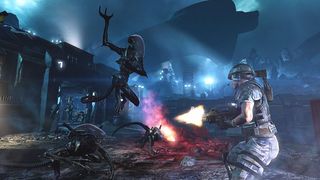
But there’s a ‘But’ coming. Of course there’s a ‘But’ coming.
You see, as impressive as Colonial Marines’ authenticity is, the jury is still out on any element past that. It’s doubtless a great Aliens experience, but a great game? Hard to tell. While our trek across the blasted wasteland of LV-426 was a damnably tense exercise in building atmosphere and character--all troubled dialogue and foreboding--and the initial exploration of Hadley’s Hope an effective spin on the quiet unease of the movie Marines’ arrival, the climactic descent of the Aliens themselves was rather less inspiring.
Pouring in through a hole in the command room’s structure, the initial swarming of biomechanical terrors across wall, ceiling, and floor is a startling cinematic set-piece. Operating on adaptable path-finding AI rather than scripting, and displaying a total disregard for vertical orientation, a large number of Xenomorphs in a relatively wide area is exactly the seething, disorienting wave of black death it should be. The combating of said menance though? Repetitive and not-too-thrilling, like taking a shotgun into a shooting gallery.
Sign up to the 12DOVE Newsletter
Weekly digests, tales from the communities you love, and more
And so it continued. As Aliens attacked us in corridors, the panic-drenched, back-to-the-wall threat was certainly more affecting. But the means of dealing with it was still a simple case of pumping bullets into a funnel until the things running down the funnel were dead. Later on, an ammo-depleted session of cat-and-mouse with three Xenos in a tight room full of obstructions was more satisfying, but all-too-brief.
As for that stint with the Smart Gun? The tense mix of eery video static, hidden enemies, and ludicrously empowering auto-aim made the sequence feel about as Aliens as it possibly could. But in terms of satisfying gameplay? Once the initial rush of wielding Vasquez’s iconic weapon had worn off, it became immediately apparent that we were just pointing a crosshair down another corridor and watching things explode as they ran at us.
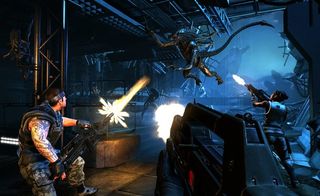
All of which makes the Smart Gun an effective metaphor for our experience of Aliens: Colonial Marines’ campaign thus far. Stunningly authentic cinematic immersion giving way to the realisation that shooting swarming, claw-swiping monsters in corridors isn’t as exciting to do as it is to watch. And that’s ignoring the arbitrary busywork of the laborious “set up five motion detectors” mission.
There are flashes of potential greatness here. Our brief stalk-and-hide session in that small room showed that just a handful of Xenos can make a satisfying encounter when smart environmental design incites more interesting behaviour. Gearbox told us on the day of our demo that the Aliens’ navigation of the environment will be where their AI shines, so here’s hoping for much more of that sort of thing in the final game. Hopefully the new classes of Aliens that Gearbox has dreamed up--such as the bull-headed Charger and the small, stealthy Lurker--will help too, without feeling tacked on or out of place.
After all, it would be a damn shame if the Aliens game we’ve been waiting 26 years for failed to capitalise on what its own medium can achieve. We now know that Gearbox can turn Aliens into an authentic video game. That much is in no dispute. Now we just need to know that said game has more going for it than the tangible presence of the movie.
Most Popular






